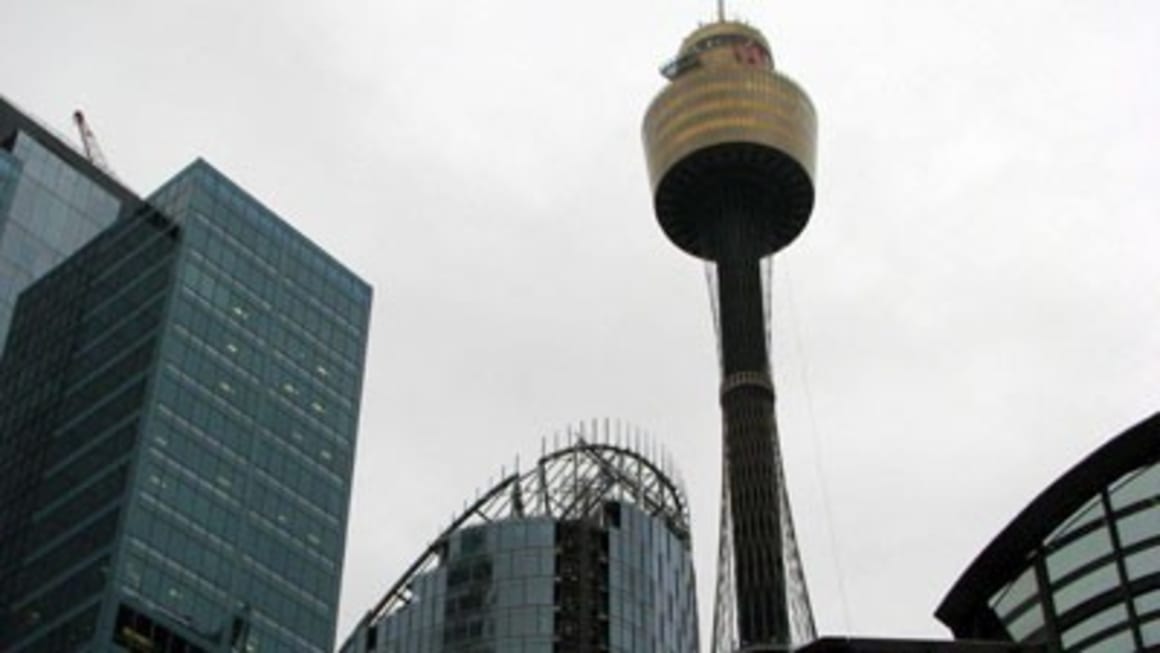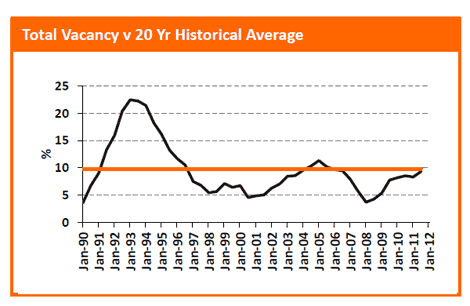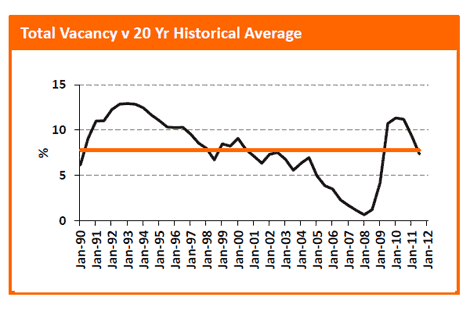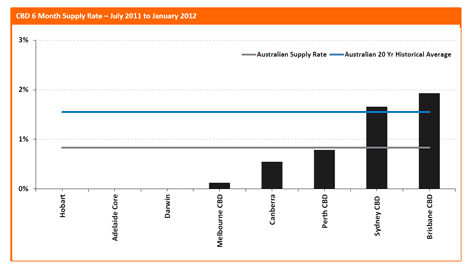Boom in office construction leaves Brisbane well placed but Sydney oversupplied: PCA

The Brisbane and Sydney CBDs have recorded the greatest addition of new office stock over the past six months, well above 20-year supply averages, but their outlooks are vastly different, according to Property Council of Australia’s latest office market report.
Click to enlarge
Source: PCA
While the Brisbane office market is well placed to benefit from an influx of mining and resource-linked companies seeking office space, Sydney’s vacancy rate could increase above its current six-year high should predictions of about 7,000 banking job cuts this year prove accurate.
Over the six months to December 2011, Sydney vacancy rate increased from 9.3% to 9.6%, bucking a national decline from 9% to 7.9%.
The Sydney CBD office market, which now has nearly 5 million square metres of office space, managed a net absorption rate of just 8,000 square metres over the six-month period, just a fraction of the 20-year historical average of more than 31,000 square metres.
Sydney office vacancy rate

Source: PCA
In comparison, the Brisbane CBD’s vacancy rate decreased from 7.4% to 6.2%, the lowest since January 2009 despite increasing supply over the six-month period at nearly double the national average.
This was mainly due to Brisbane achieving net absorption of 54,032 square metres over the six-month period, the highest in five years and more than four times the 20-year average. In 2012, an additional 111,000 square metres of office space will enter the Brisbane market in 2012.
Brisbane office vacancy rate

CBRE executive director of global research and consulting Kevin Stanley described the Sydney result as the “biggest disappointment” in the report, noting “little growth in occupied office space despite Sydney being the largest CBD in the country”.
“While the expansion in occupied space was positive, it was very weak and the vacancy rate has increased slightly to be 9.6%,” Stanley says.
“Concerns about the global economic and financial outlook have led business to be very cautious about committing to more office space in Sydney, where the share of companies in the finance and insurance industries is the highest in Australia (about 25% of all CBD employment).
“With global uncertainty likely to continue through 2012, we don’t expect the Sydney market to expand strongly again in the year ahead. But we do hold out hope that when the European financial mess is sorted, global confidence will return and Sydney will expand strongly once again. The initiatives of the new state government will also eventually lead to a more active State economy.”
Knight Frank national director for office leasing in NSW Andy Collins says the marginal increase in Sydney’s vacancy rate was to be expected, “given relatively weak tenant demand experienced over the period”.
“Landlords are actively competing for tenants within the 'single-floor market', where effective growth during 2012 will be subdued,” Collins says.
“Vacancy in the premium-grade market segment has jumped markedly, which is probably due to the inclusion of 1 Bligh Street and 85 Castlereagh Street. Despite this, moderate growth in premium-grade effective rental levels can be expected during 2012, as pockets of tenant demand focus on high quality space”.
Like Stanley, Collins believes the Sydney market recovery will be “signalled by stability in the global equities markets and sustained growth in local business confidence”.
Analysts expect the Brisbane market to continue to perform strongly over 2012 should large leasing deals continue to be signed.
David Prosser, state director for office services at CBRE, says Brisbane numbers are consistent with expectations in both the Brisbane CBD and fringe markets.
“In order for Brisbane to sustain a continued improvement in market conditions, it is critical the large leasing deals currently in negotiation at the top end of town are concluded in a timely manner. This will help consolidate the vast improvement in sentiment we experienced in the second half of 2011,” Prosser says.
“Supply and demand is quite simple to evaluate over the next three years, with almost no new supply additions limiting any danger of a major upswing in vacancy.
“Brisbane is a very stable market for the forseeable future and can comfortably withstand a reduction in net absorption should economic conditions substantially worsen or the mining boom fall off a cliff,”
“Some tenants are seeking to renegotiate a renewal early with their current landlords should they have a 2014 lease expiry as it is expected market conditions will significantly favour landlords by this time,” he says.
The overall result – vacancies declining from 9% to 7.9% – was heralded by the Property Council of Australia, which said the Australian office market has “shrugged off gloom about the wider economy recording a decrease in vacancy to its lowest level in three years”
Overall net absorption, the most reliable indicator of business space demand, was 20% higher than the historical norm at around 240,000 square metres
Over the six month period of the survey, supply was less than 200,000 square metres, about one-third below the long-term average
“Despite the global gloom, negative business and consumer sentiment, the halting recovery from natural disasters and a tetchy political environment, the demand for space increased and vacancies fell,” says Property Council chief executive Peter Verwer.
